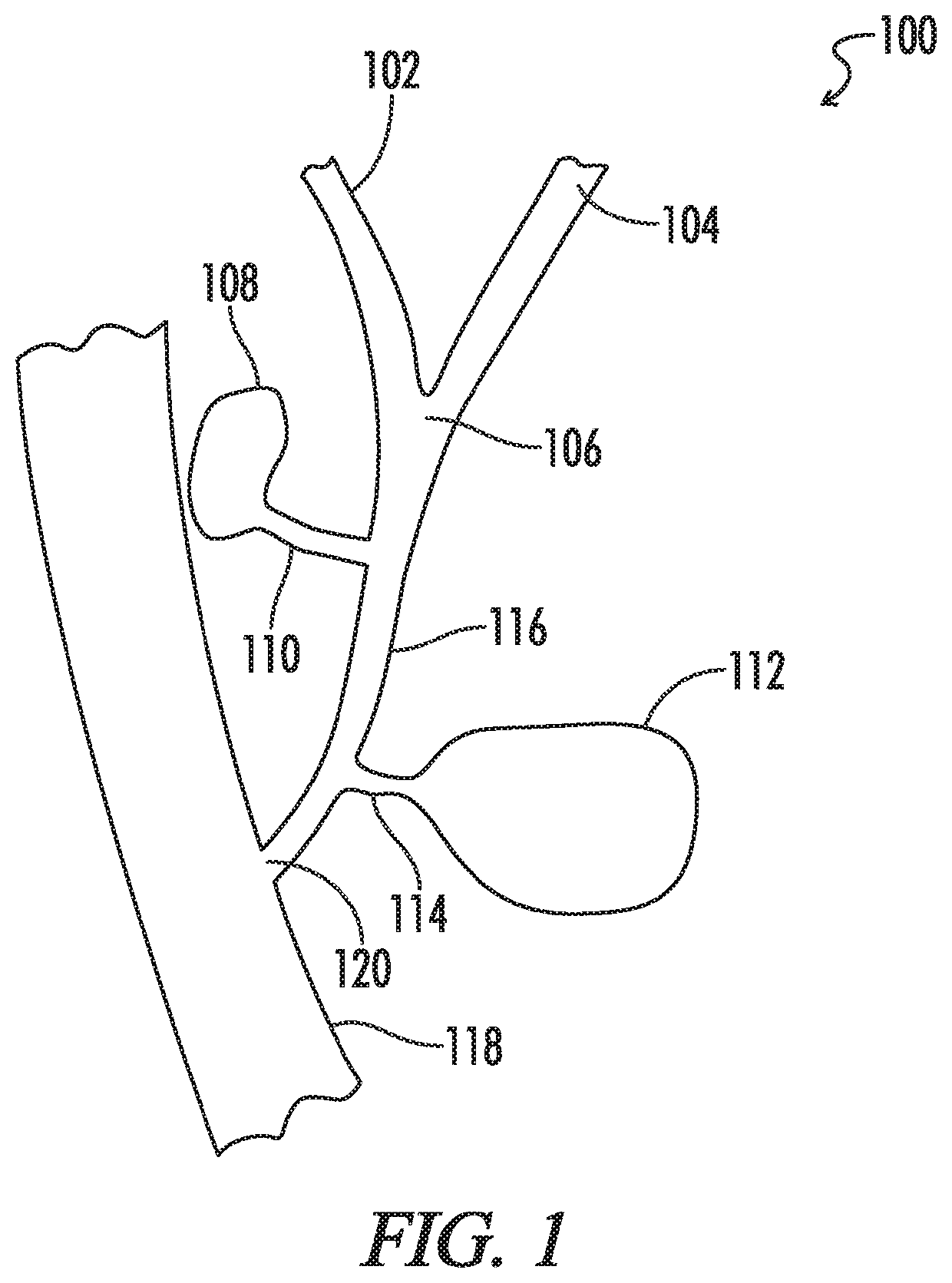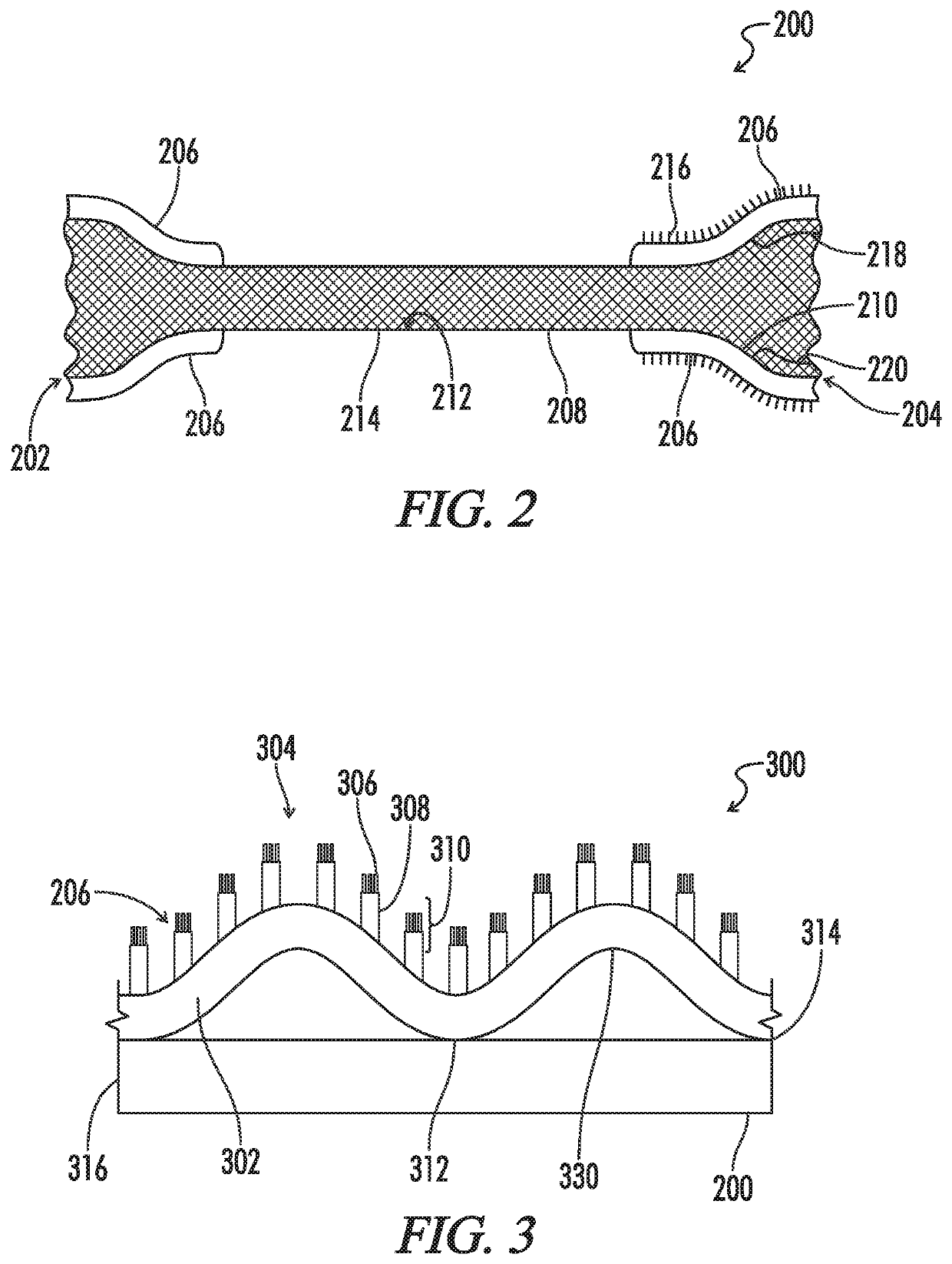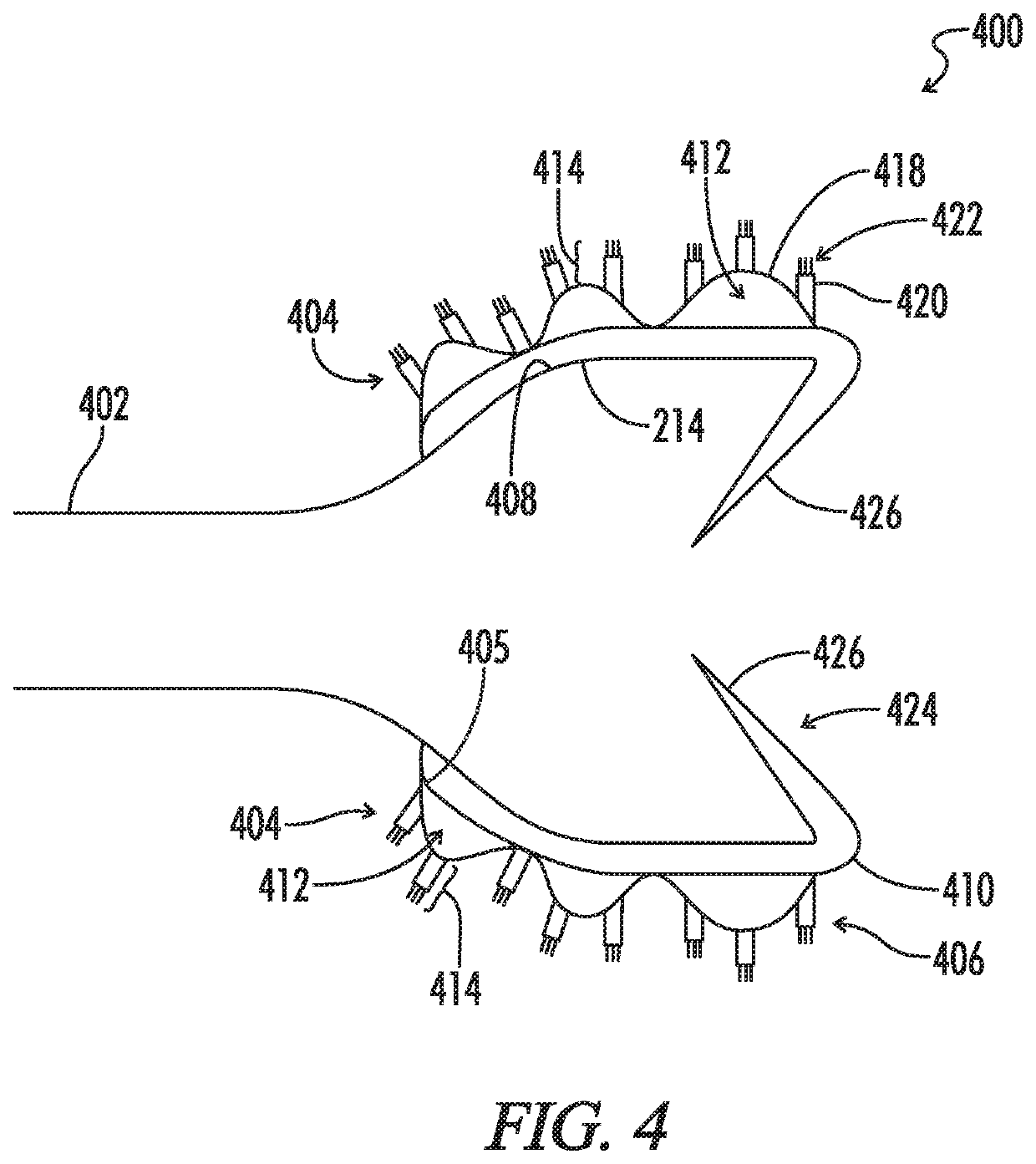Biliary Stent
a biliary or gastrointestinal stent technology, applied in the field of biliary or gastrointestinal stents, can solve the problems of stent migration, stents, plastic stents, not as easily expanded as metal wire stents, etc., and achieve the effect of reducing migration and maintaining luminal patency
- Summary
- Abstract
- Description
- Claims
- Application Information
AI Technical Summary
Benefits of technology
Problems solved by technology
Method used
Image
Examples
example 1
[0132]An endoprosthesis having an expanded state and an unexpanded state, the endoprosthesis comprising: a stent, wherein the stent has an inner surface defining a lumen, an outer surface, a first end, a second end, and a stent thickness defined between the inner surface and the outer surface, wherein the stent defines a plurality of apertures extending through the stent thickness, wherein the apertures are arranged in a macro pattern; and a polymeric coating attached to the outer surface of the stent, the polymeric coating comprising a base comprising a first surface attached to the outer surface of the stent; and a tissue engagement portion comprising a second surface facing outwardly from the stent, the tissue engagement portion comprises a structure that defines a plurality of textures extending inwardly from the second surface toward the base, wherein the textures are arranged in a micropattern, wherein the base and the stent are coterminous, wherein the base covers the apertur...
example 2
[0133]The endoprosthesis of Example 1, wherein when the endoprosthesis expands in a lumen defined by a vessel wall, the structure defining a plurality of textures arranged in a micropattern applies a force that creates a desired interlock between the vessel wall and the endoprosthesis.
example 3
[0134]The endoprosthesis of Example 1 or Example 2, wherein the shape of the plurality of textures is selected from the group consisting of a cylinder, a rectangular prism, a prism with a polygonal base, a sphere, and an ellipsoid, or any combination thereof.
PUM
| Property | Measurement | Unit |
|---|---|---|
| height | aaaaa | aaaaa |
| lateral aspect ratio | aaaaa | aaaaa |
| diameter | aaaaa | aaaaa |
Abstract
Description
Claims
Application Information
 Login to View More
Login to View More - R&D
- Intellectual Property
- Life Sciences
- Materials
- Tech Scout
- Unparalleled Data Quality
- Higher Quality Content
- 60% Fewer Hallucinations
Browse by: Latest US Patents, China's latest patents, Technical Efficacy Thesaurus, Application Domain, Technology Topic, Popular Technical Reports.
© 2025 PatSnap. All rights reserved.Legal|Privacy policy|Modern Slavery Act Transparency Statement|Sitemap|About US| Contact US: help@patsnap.com



